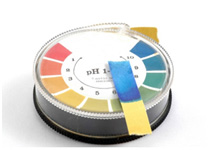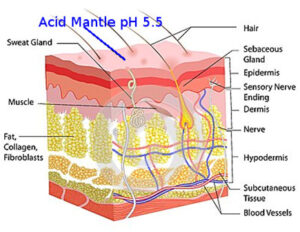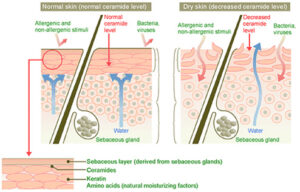FAQ
Most adult exposures to lead are occupational and occur in lead-related industries such as lead smelting, refining, manufacturing, construction and painting. The probability of lead poisoning increases when workers inhale lead dust and lead fumes, or when they eat, drink, or smoke in or near contaminated areas. Between 0.5 and 1.5 million workers are exposed to lead in the workplace. Workers can accidentally expose family members by bringing lead dust home on their skin, shoes, and clothing. Lead brought home in this way is referred to as “take home lead.” People who work with materials that contain lead need to learn how they can protect themselves and their family.
Lead is a naturally occurring element that people have used almost since the beginning of civilization. Lead is bluish-gray in color and has no characteristic taste or smell. Lead has many different uses. A variety of human activities have spread lead widely throughout the environment, such as leaded gasoline. Efforts have been made to limit the use of lead containing products to minimize harmful effects on people and animals.
I am item content. Click edit button to change this text. Lorem ipsum dolor sit amet, consectetur adipiscing elit. Ut elit tellus, luctus ullamcorper mattis, pulvinar dapibus leo.
Employees working in a variety of occupational settings may be exposed to lead hazards. Some of these lead-related industries include:
» Painters and remodelers
» Battery manufacturing and recycling
» Automotive radiator manufacturing and repair
» Casting and machining lead, brass, bronze, pewter, and white metal
» Plating operations
» Manufacturing or the use of leaded paints, inks, dyes, glazes or pigments
» Lead soldering, such as in the electronics industry
» Gun firing ranges
» Ship building and repair
» Salvaging and recycling scrap metal
» Manufacturing ceramics
» Manufacturing leaded glass or crystal
» Manufacturing ammunition and explosives
» Compounding plastic resins
» Auto body repair
» Making stained glass
Most human exposure to lead occurs through breathing or eating. You can breathe in lead dust, mist, or fumes, and swallow lead dust on food, drinks, cigarettes, or your hands and face.
Once lead gets into your body, it can stay there for a long time. Lead can build up in your body if you are in contact with even a small amount of lead for a long time.
The more lead in your body, the more likely that harm will occur. How much damage lead does to your body may differ from one person to another.
If you are exposed to lead, many factors determine whether you will be harmed. These factors include the dose (how much), the duration (how long), and how you come in contact with it. You must also consider your age, gender, diet, family traits, lifestyle, and general state of health.
Lead affects many important body systems. Lead can damage the brain and nervous system, red blood cells, kidneys and reproductive systems of men and women. Lead easily crosses the placenta in a pregnant woman and can harm the fetus. Lead exposure can cause headaches, dizziness, sleep disturbances, memory loss, depression, fatigue, irritability, joint and/or muscle pain, miscarriage, and other serious health problems. Damage from lead exposure can be permanent.
The signs and symptoms of lead poisoning are often vague and can easily be confused with symptoms of other conditions. The blood lead level at which symptoms occur varies greatly from person to person. Some people are poisoned by lead yet have few or no obvious symptoms.
You should have your blood tested if you work with lead or are employed in a lead-related industry. A blood lead test measures how much lead is in your blood at the time of the test. The amount of lead in your blood is measured in micrograms of lead per deciliter of whole blood (μg/dl). This type of measurement in your blood is called your Blood Lead Level, or BLL. The typical BLL for U.S. adults is less than 5 μg/dl.
The following list outlines some of the potential dangers of lead poisoning to health:
» From 1-20 μg/dl, lead is building up in the body and health effects may be occurring.
» From 20-30 μg/dl, regular exposure is occurring and there is evidence of potential health problems.
» At lead levels between 30 and 50 μg/dl, health damage may be occurring, even if there are no symptoms.
» Between 50 and 80 μg/dl, serious health damage may occur.
» At levels above 80 μg/dl, serious, permanent health damage or death may occur.
Blood lead levels can rise quickly. With frequent monitoring, dangerous exposures can be quickly identified and corrected. A blood lead level over 20 μg/dl indicates a substantial exposure to lead. There is also increasing evidence that adverse health effects can occur at BLLs below 20 μg/dl.
The best way to prevent lead poisoning is to remove the poisoned worker from lead exposure. This will allow the body to begin removing the lead. Sometimes adults with very high BLLs and serious symptoms will be treated with a drug to help the body remove lead. This is called “chelation therapy.” The need for chelation therapy is extremely rare. Only a licensed medical doctor (MD) with experience treating adult lead poisoning should make decisions regarding chelation for an individual.
Another way to prevent lead poisoning is to prevent contact. Proper engineering controls (a local exhaust ventilation system, for example) are often the best way to control lead contact. Other ways of controlling lead exposure in your work-place include:
· Lead safety training
· Using lead safe work practices
· Switching to lead-free materials and/or controlling lead at the source
When engineering controls cannot reduce lead exposures to a safe level, you must wear a respirator. Your employer should have a respiratory protection program that includes fit-testing to make sure your respirator will protect you properly. You must also be trained to use and take care of your respirator. Using the respirator correctly will protect you from breathing in lead.
For more information regarding respiratory protection and fit-testing you can contact the Occupational Safety and Health Administration (OSHA).
Following these simple rules when working with lead can help protect you and your family from lead poisoning.
(1) Do not eat, drink or smoke in lead-contaminated work areas.
(2) Wash your hands before eating, smoking, or touching your face after working with lead.
(3) Wear your protective equipment over your clothing whenever you work with lead.
(4) Shower, wash your hair and change into clean clothes (including shoes) before leaving the workplace. “Take home lead” can contaminate your vehicle, home, and potentially harm your family, especially young children.
(5) Store street clothes in a separate area from your work clothes.
(6) Eating a well-balanced diet with proper nutrition, can help reduce lead levels.
In Adults: | In Children: | Severe symptoms: |
› headaches | › irritability | › nausea/vomiting |
In both adults and children, signs and symptoms are easily misdiagnosed. A child with lead poisoning may seem well. Symptoms usually do not develop until the condition is very serious. Symptoms of lead poisoning are easily confused with symptoms of other illnesses.
The surface of the skin is slightly acidic, giving rise to the concept of the acid mantle. Normal healthy skin has potential of hydrogen (pH) range of 5.4-5.9 and a normal bacterial flora. Studies have shown that potential of hydrogen (pH) of skin increases in proportion to the pH of cleanser used. Increase in pH causes an increase in dehydrative effect, irritability and propionibacterial count. Changes in the pH are reported to play a role in the pathogenesis of some skin diseases. Therefore, the use of skin cleansing agents with a pH of about 5.5 – 7.0 may be of relevance in the prevention and treatment of those skin diseases.
Unfortunately, pH is not mentioned in the labels of many products.

YOUR pH
I often refer to the pH of the skin, because it’s the crucial factor for determining healthy bacteria and the level of acidity.
A neutral pH is 7, anything above that creates an ALKALINE environment, and anything below creates an ACID environment.
If your skin is healthy, it should have a pH of around 5.5.
But did you know, there is a good reason why your skin is so acid? It is because pathogenic bacteria thrive under alkaline conditions.
This is why it is really important that your skincare products are formulated without strong astringents, which have a real tendency to upset the delicate micro flora.
Ideally the ingredients within a formula, must be gentle enough to keep your pH levels balanced, that is if you want your skin to remain nice and healthy.

What is Acid Mantle?
The acid mantle is a very fine, slightly acidic film on the surface of human skin acting as a barrier to bacteria, viruses and other potential contaminants that might penetrate the skin. It is secreted by sebaceous glands. The pH of the skin is between 5.5 and 6.2, slightly acidic.

Understanding the Acid Mantle
Is sensitive skin a concern?
Or is your skin dry, red, inflamed or itchy?
Then chances are your acid mantle is out of whack.
This protective acid mantle is also referred to as the hydro-lipid film.
It’s a protective slightly acidic film, that sits on the skins surface, acting as the interface between you and the world.
In the 1920’s, Macrhionini and Schade identified the acidity of the skin, which they called the acid mantle. They also found that this mantle discouraged the growth of fungi and bacteria; It wasn’t until much later that it was discovered that chronic alkalisation can knock this acid mantle out of balance, which can lead to inflammation, dermatitis and atopic skin diseases.
If your still finding the term acid mantle a little technical, let me try to help by giving you another scenario.
Have you ever washed your face with soap or an astringent cleanser, and experienced sensitivity or a tight, dry feeling?
That was your acid mantle being stripped and knocked out of balance.
As far as skin structure goes, I have to admit it’s pretty cool.
It’s a unique micro-flora that’s made up of strange secretions which cover the entire surface of your skin.
» The oily secretions originate in the sebaceous glands
» The water phase is from perspiration in the sweat glands, which exhibit a powerful bactericidal effect
» Secretions also come from our natural moisturising factor
All of which helps to keep your skin gorgeous and healthy.
ANATOMY OF YOUR ACID MANTLE
Your skin’s acid mantle is made up of the following:
» Water
» Lactic acid
» Urocanic acid
» Fatty acids
» Pyrrolidine carboxylic acid
» Eccrine glands which secrete amino acids
» These friendly secretions, help with the metabolism of your skin.
» They protect against environmental assaults
» They secrete enzymes, that break down excess sebum in the skin
» They prevent bad bacteria and viruses from entering the blood stream
» They keep your skin soft and supple, so it stays free from cracks and abrasions
» They boost the immune system, which produces antigens close to the skins surface; these antigens retard the growth of bad bacteria, known as pathogens.


